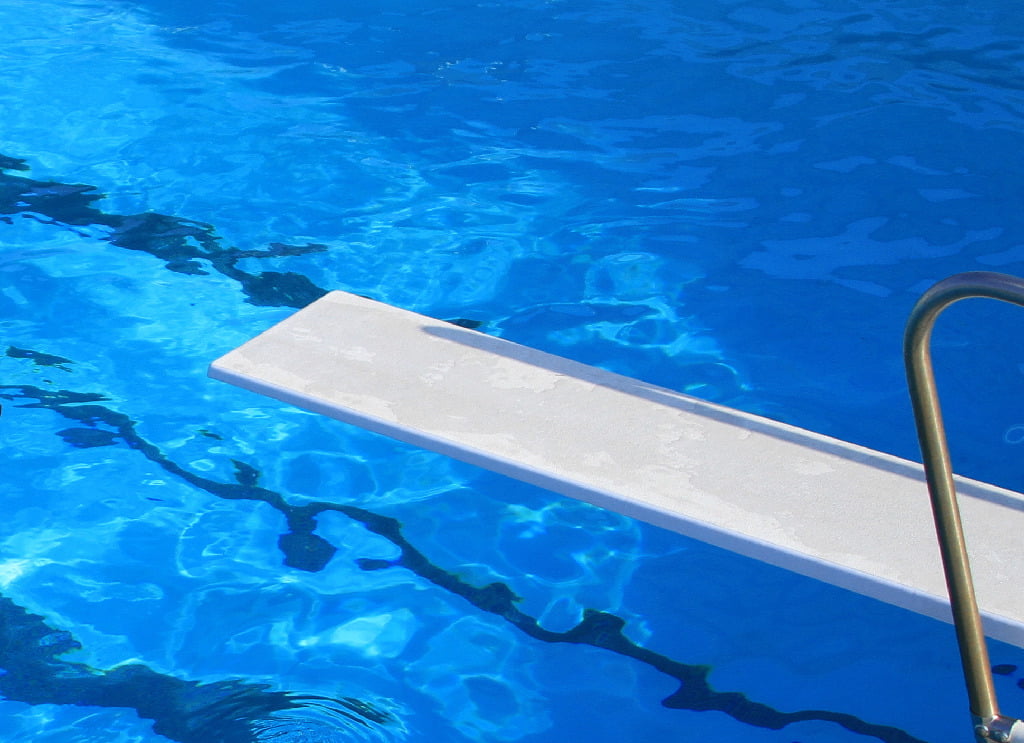
File Photo
Case presentation
Jaime and Robert were three-year-old boys who lived next door to each other. On a freezing day (32 Degrees F) in early December, they were dressed in warm clothing (snow suits) with boots on their feet and warm Santa Claus hats. Jaime’s mother (Janet) was planning to take them to the mall to see Santa Claus. On the way out to the car, the telephone rang, and Janet told the boys to stay where they were and ran into the house to answer the telephone. She says the phone call lasted longer than she expected, but she estimated the boys were outside alone for no longer than five minutes. When she came outside, she could not find the boys. The above-ground pool was in the backyard, and she noticed a chair right against the pool. She ran over and found both boys were floating face down in the pool which had a thin film of ice on the surface. She is unclear what she did first, but she ran back into the house and called 911. She thinks she did that before she pulled the boys out of the pool. EMS and police arrived and began to perform CPR on both boys. Robert was pronounced dead in the emergency department after approximately 30-40 minutes of a resuscitation attempt. Jaime’s pulse and respirations returned, and he was placed on life support. Jaime never regained consciousness. He died seven weeks after the immersion.
Definition
Drowning is often a silent event. Not all the victims call for help and often the only sign of trouble is their hand waving above the water. It is defined as the process of experiencing respiratory impairment from submersion/immersion.1 Drowning occurs when water is breathed in and causes vocal cords to spasm and close. The airway is closed, and it becomes difficult to breathe. Water may never actually reach the lungs. These symptoms occur at once. Secondary drowning happens if water gets into the lungs. Because it can irritate the lungs, fluid builds up and pulmonary edema occurs. Difficulty breathing occurs almost at once and worsens over time. These events may happen from getting water in the mouth by being splashed or dunked or being completely submerged.1
Epidemiology
Drowning has become a major public health problem. It is the third-leading cause of unintentional injury and death worldwide. In the United States, 3,960 fatal unintentional drownings occur annually while 500,000 submersion events occur annually.2 It is the second leading cause of death in children under 15 years-of-age.
It is important to point out, 90% of drownings occur in backyard pool in children ages 1-4 while infants under 1 year old down in bathtubs. More than 50% of fatal and nonfatal drownings among people 15 years and older occur in natural waters such as lakes, rivers and oceans. Jaime and Robert were three-year-old boys found floating face down in the pool which had a thin film of ice on the surface. Children have drowned in baths, buckets, and toilets and inebriated individuals have drowned in puddles. Those most vulnerable and at risk for submersion events are children under the age of 5, the elderly, and individuals who are under the influence of drugs or alcohol.3 Race and gender also play a role as black males 15-19 have the highest incidence of drowning mortality (4.25 per 100,000). Black children ages 5-14 drown at more than three times the rate of white children.5
Definitions
Death at any time due to submersion or immersion is considered a fatal drowning. Nonfatal drowning occurs if a person is rescued, and the process of drowning is interrupted. Jaime’s death was considered drowning although he was initially resuscitated and survived for several weeks after the event. Injuries related to submersion/immersion events range from transient to profound neurological deficits.6
It makes little difference if the incident occurred in fresh or salt water. Both events induce pulmonary injury and hypoxia. The water content does not play a significant role. Outcomes are based on how much water was aspirated and how long the person was submerged. Studies at autopsy have revealed the amount of water (fluid) aspirated was less than 4 ml/kg while other investigations determined that intravascular abnormalities do not occur until more than 11mL/kg of fluid aspirated.1 The process of drowning begins when the victim starts to hold his/her breath and soon can no longer keep the airway clear. As the inspiratory drive increases, water enters the airway, coughing occurs as a reflex response. Laryngospasm can occur but it is stopped by the onset of brain hypoxia along with hypercapnia and acidosis which results in a loss of consciousness.5
Multiple factors affect the stages of drowning and the outcome which include water temperature, length of time of submersion, age, degree of hypothermia, the diving reflex, and resuscitative efforts. Hypothermia lowers cerebral metabolic rate and can be neuroprotective to some extent. Fresh water submersion occurs when water fills the lungs and enters the bloodstream quickly which causes hemolysis. The fluid that fills the lungs prevents inspiration of air which, in turn, leads to cardiac arrest. This process can take from five to 20 minutes. The drowning victim is usually unconscious from hypoxia before the heart stops. The process in saltwater drowning starts when the lungs fill with salt water and the sodium content pulls blood out of the bloodstream and into the lungs. Oxygen is prevented from reaching the blood. This process takes about five-to-30 minutes.1 However, regardless of the medium, fresh, or salt water destroys the pulmonary surfactant which leads to alveolar collapse, atelectasis, noncardiogenic pulmonary edema, intrapulmonary shunting, and ventilation-perfusion mismatch.1
The first cardiac response to submersion is tachycardia and hypertension which changes to bradycardia and pulmonary hypertension and decreased cardiac output. This process takes only seconds to a few minutes. However, isolated cases have reported that this process can take up to one hour when the victim is immersed in ice water.
Cold-water drowning is described as having four phases. In the first phase, the shock response leads to an automatic gasp reflex. In the second phase, cold incapacitation occurs within the first five to 15 minutes as vasoconstriction decreases and blood flow to the extremities decreases and the victim cannot move his/her hands, feet, arms and legs. Phase three is the onset of hypothermia. Hypothermia can take up to 30 minutes to occur. Signs of hypothermia include shivering, slow and shallow breathing, confusion, drowsiness, or exhaustion, and slurred speech. The final phase of circum-rescue collapse is not well understood and causes symptoms ranging from fainting to death. There is a belief that the abrupt drop in blood pressure may cause this final stage of cold-water drowning.7
Prehospital providers need to be alert to the surroundings associated with the drowning. There are many factors to consider which include knowing what precepted the submersion/immersion event. Abuse or neglect should always be considered when victims are children.5. Heavily intoxicated victims lose the ability to save himself/herself and are hampered by confusion and lack of coordination. Hyperglycemia and seizure pre-submersion are considerations and may complicate the outcome. The possibility this event was an attempted homicide should be explored. Signs of trauma and violence can indicate the event was not accidental. Other signs may exist that might suggest this may be a suicide if the victim is fully clothed.
Cervical spine injury is an important consideration if there is evidence that trauma has occurred prior to the submersion such as a fall from a height, diving into shallow water, or an associated motor vehicle crash. However, studies have shown that only a small percentage of submersion victims had injury of the cervical spine. Spine immobilization is not recommended if there is no evidence of violence.5
Management
Responding to an immersion/submersion incident should always include BLS and ACLS if the victim is pulseless. Mouth-to-mouth ventilation should begin at once before the victim has been removed from the water. Compressions should begin as soon as it is practical and continue on arrival to the emergency department. Unless airway occlusion is suspected the Heimlich maneuver and other maneuvers to remove fluid from the lungs are ineffective and may put the victim at risk for aspiration.
Remove all wet clothing and apply warm blankets. Cardiac monitoring and pulse oximetry should be started as soon as possible and continue in the emergency department. Continuous core temperature monitoring should be started and maintained. Blood glucose should be monitored, and the administration of empiric Naloxone should be considered. Rewarming strategies such as extracorporeal membrane oxygenation (ECMO) could be considered.8 Frequent arterial blood gas results are essential. Chest radiographs should be obtained although initial films are often negative.5 Isotonic intravenous fluids should be administered.
The decision to intubate the victim is based on clinical signs that include increasing respiratory distress, loss of airway reflexes and any associated head or chest injuries. A PaCO2 greater than 50 mmHg indicates a need to intubate and provide ventilatory support. The patient should be able to maintain oxygen saturations greater than 90% or PaO2 greater than 60 mmHg. In an awake patient the use of high flow oxygen via face or nasal mask may suffice but the risk of gastric distention, vomiting, and aspiration is always a concern. If the patient is not breathing, a bag valve mask or intubation with an endotracheal tube should be considered.
The length of time to continue resuscitation efforts in hypothermic submersion/immersion victims is controversial. As cerebral death cannot be determined in temperatures below 30 degrees centigrade. It is recommended that the safest approach is to continue efforts until the core temperature reaches 30 to 35 degrees centigrade.8
Induced hypothermia aimed at reducing reperfusion injury after anoxic brain injury has been investigated but no consensus has been reached. Corticosteroids, barbiturate-induced coma, aggressive diuresis, neuromuscular blockade, and hyperventilation do not improve the neurologic outcome.9
Disposition
Patients are admitted who have any symptoms or a history of apnea, unconsciousness or hypoxia, cardiac arrhythmias, or an abnormal chest radiograph. However, patients who have no symptoms or other abnormalities but experienced a submersion/immersion event should remain in the ED for at least 6 hours for observation. Discharge instructions should give clear information about signs of pulmonary complications and should be discharged into care by a competent friend or relative.3
Discussion
There are many myths surrounding submersion/immersion events. Care of these patients should follow evidence-based guidelines regardless of the poor prognosis for many of these victims. Submersion injuries are multiple, and every effort should be made to improve outcomes for the victims. Resuscitation begins on the scene before the victim is removed from the water. Healthcare providers should be aware of the dangers and risks of drowning and offer information to patients and families about prevention
Drowning death rates have decreased but the racial/ethnic disparities have not. Several factors may explain the overall decrease in the death rates. The public awareness of the preventative measures such as knowledge of CPR, the dangers of alcohol use when involved in water-related activities and close and constant supervision of children may account for some of the decrease.10 Drowning follows a process. The fluid medium is of little clinical significance. Factors such as gender, age, and race play a key role in the epidemiology of the population of drowning victims. Interventions that might be considered supportive of airway support do not guarantee success in resuscitation. Finally, the temperature of the fluid can be a significant factor in resuscitation, but it is not prognostic of the outcome.
Prevention
Because all victims of drowning require care, knowledge of the process of drowning, what works and what doesn’t work, and prevention of drowning should become part of the prehospital and emergency curriculum. Community programs promoting swimming and water safety might help reduce the disparities. Increased parental awareness is also believed to have decreased the incidence of pediatric drownings. Preventive strategies include:
- Learn basic swimming and water safety skills.
- Community-based programs to teach inner city children water safety might prove to reduce some of the disparities in downing rates.
- Build fences that fully enclose pools. When not in use, remove ladders in above ground pools.
- Supervise water activities closely. The individual supervising the water activities must be capable of providing rescue efforts if needed
- Have a mobile telephone available to communicate in an emergency
- Wear a life jacket.
- Do not rely on inflatable swimmers for children who cannot swim.
- Learn CPR
- Know the risks of lakes, rivers and oceans with hidden hazards, dangerous currents or waves, rocks or vegetation and limited visibility
- Avoid alcohol when engaging in water sports or supervision of water activities
- Take more precautions for children who have medical conditions such as a seizure disorder.10
Conclusion
The boys in the case presentation were at considerable risk for drowning. For every child who dies from drowning, another five receive emergency department care for nonfatal submersion injuries. Although prehospital and emergency care providers are an excellent resource of information about the risks of unintentional drowning, it is often too late when the victim is brought to the ED. The statistics surrounding resuscitation efforts in patients who are pulseless on arrival to the ED are dismal. Unfortunately, there is no statistically significant data to support the use of medications to reverse the neurological impact of drowning. Much of the management of a drowning victim is based on prehospital and supportive care. Rewarming the patient and respiratory support with the administration of oxygen and/or intubation are measures to support the patient but have little ability to reverse the impact of the submersion. The priority in management of submersion/immersion events is to avoid further injury and to improve neurological outcomes. Preventative programs to educate the public about risks may also help to reduce the numbers of drownings. Continued research related to resuscitation efforts may also help to reduce the poor outcomes related to submersion events.
Editor’s note: This manuscript has been updated with language to better match today’s accepted medical terms.
References
- Szpilman, David, et al. “‘Dry Drowning’ and Other Myths.” Cleveland Clinic Journal of Medicine, vol. 85, no. 7, 2018, pp. 529–535., https://doi.org/10.3949/ccjm.85a.17070
- Centers for Disease Control and Prevention “Persistent Racial/Ethnic Disparities in Fatal Unintentional Drowning Rates among Persons Aged < 29 Years – United States .”, Centers for Disease Control and Prevention, 30 Dec. 2021, https://www.cdc.gov/mmwr/index2021.html.
- Richards, D, and K Knaut. “Accidental Hypothermia.” Rosen’s Emergency Medicine: Concepts and Clinical Practice, 7th Edn, edited by D Danzi, 7th ed., Mosby/Elsevier,
- Clemens, Tessa, et al. “Persistent Racial/Ethnic Disparities in Fatal Unintentional Drowning Rates among Persons Aged ≤29 Years — United States, 1999–2019.” Morbidity and Mortality Weekly Report, vol. 70, no. 24, 2021, pp. 869–874., https://doi.org/10.15585/mmwr.mm7024a1.Philadelphia, PA, 2010, p. 1929.
- Restrepo, C. , Carlos, et al. Journal of Trauma and Care, vol. 3, no. 3, 22 June 2017, p. 1026., https://doi.org/10.36648/trauma-care.
- Coskum, Kasim Oguz, et al. “Extracorporeal Circulation for Rewarming in Drowning and near-Drowning Pediatric Patients. .” Artif Organs, vol. 34, no. 11, Nov. 2010, pp. 1026–1030., https://doi.org/10.1111/j.1525-1594.2010.01156.x.
- “What You Need to Know about Cold Water Drowning.” Renown, 3 June 22n.d., https://g.co/kgs/64NGZu. Accessed 20 June 2020.
- Darocha, Tonasz, et al. “The Chain of Survival in Hypothermic Circulatory Arrest: Encouraging Preliminary Results When Using Early Identification, Risk Stratification and Extracorporeal Rewarming Scandinavian .” Scandinavian Journal of Trauma, Resuscitation and Emergency Medicine, vol. 24, 29 June 2016, Romlin, Birgitta, et al. “A. Excellent Outcome With Extracorporeal Membrane Oxygenation After Accidental Profound Hypothermia (13.8°C) and Drowning.” Critical Case Medicine, vol. 43, no. 11, Nov. 2015, pp. e521–e525., https://doi.org/doi:10.1097/CCM.0000000000001283. https://doi.org/https://doi.org/10.1186/s13049-016-0281-9.
- Romlin, Birgitta, et al. “A. Excellent Outcome With Extracorporeal Membrane Oxygenation After Accidental Profound Hypothermia (13.8°C) and Drowning.” Critical Case Medicine, vol. 43, no. 11, Nov. 2015, pp. e521–e525., https://doi.org/doi:10.1097/CCM.0000000000001283.
- Denny, Sarah, et al. “Prevention of Drowning.” Pediatrics, vol. 143, no. 5, May 2019, p. e20190850., https://doi.org/10.1542/peds.2019-0850.
Mary Kamienski, PhD, FNP, ENP, FAEN, FAAN, is a professor and specialty director of the FNP in Emergency Care track in the Division of Advanced Nursing Practice in Rutgers School of Nursing. Dr. Kamienski has 46 years years of experience in nursing which has been primarily in emergency prehospital and hospital-based care. She served as an EMT in the years prior to becoming a nurse. She has been in academia full-time for sixteen years and maintains a faculty practice in an urgent care setting.
Dr. Karen Schill, DNP, APN-C, FNP-BC, ENP-C, CEN, CFRN, NREMT-P, has more than twenty years of experience in the prehospital setting, ranging from basic life support, paramedicine, and air and ground critical care transport. She teaches prehospital courses with the Atlantic Mobile Health Training Center Dr. Schill spent twelve years as a bedside emergency nurse and continues to work as an advanced practice nurse in a Level 1 Trauma Center. She presently works as a full-time assistant professor clinical instructor in the Rutgers School of Nursing FNP in Acute Emergency Care program.




The term near-drowning has been obsolete since 2002. It is disappointing to see its continued use in articles such as this, which should reflect contemporary practice.
It is great that JEMS is focused on this critical topic. And much of this article is well done, but 90% of drownings do not occur in backyard pools, it is no where near that number. And there is just drowning. It can be fatal or non-fatal, but the terms delayed drowning, near drowning, dry drowning, etc. are no longer used. JEMS either needs much better editing or more up to date authors. Major blunders like this make me question the veracity of the rest of the story and the whole web site